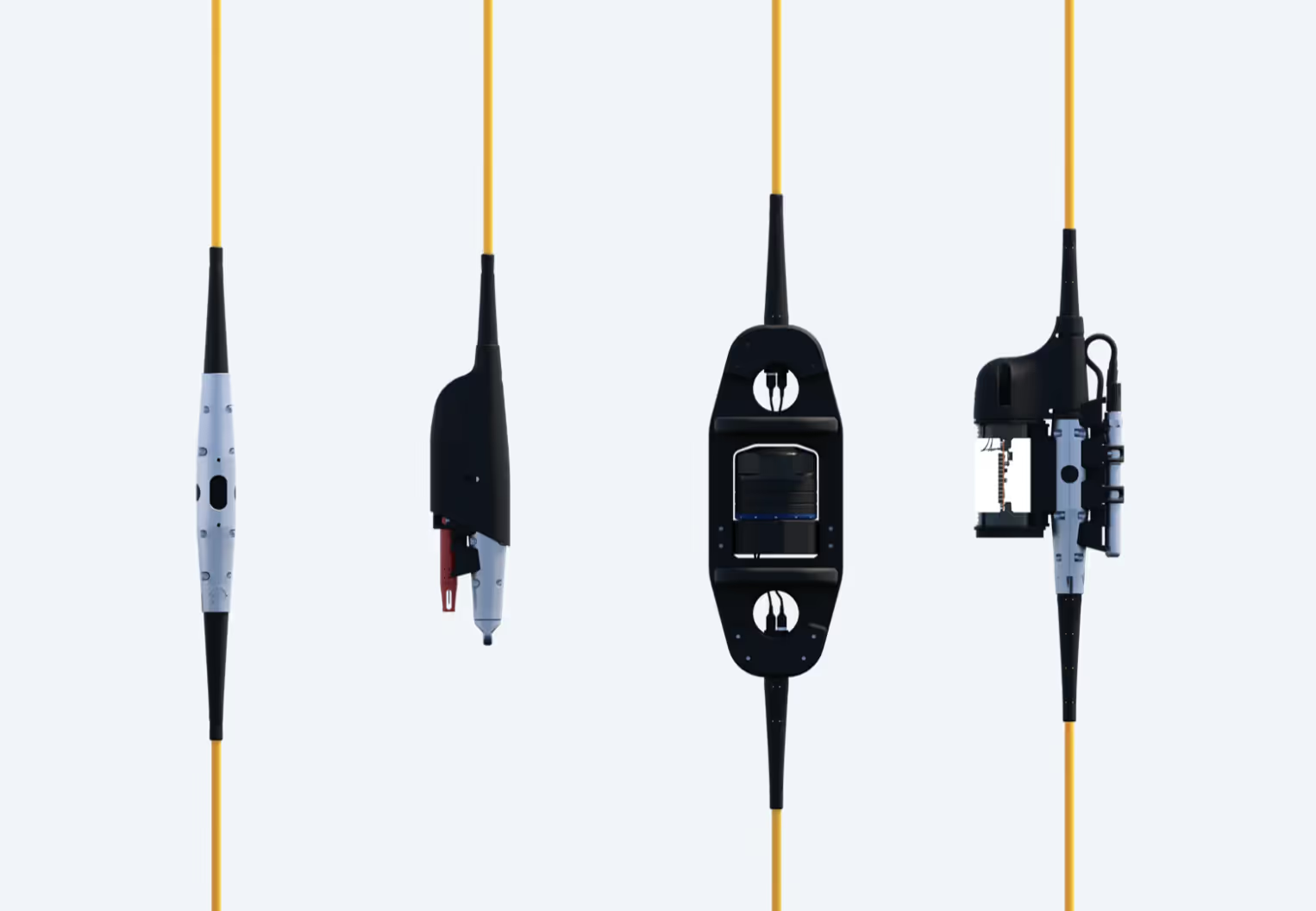.avif)
.avif)
Marine professionals deploy our Spotter Platform to seamlessly collect and transmit real-time ocean data in a wide variety of contexts, from aquaculture to offshore wind to coastal engineering. While numerous customers use Spotter buoys to collect data exclusively at the sea surface, many deploy Spotter with Smart Mooring to extend the platform’s sensing capabilities underwater.
For these subsurface users, the technology available to collect underwater data affordably and efficiently is limited. This gap has afforded Sofar the unique opportunity to help push the boundaries of what’s possible for accessible underwater data collection.
To that aim, we are thrilled to announce that Spotter with Smart Mooring now measures current speed and direction out-of-the-box.

Current is the third compatible payload, along with temperature and pressure, that can integrate directly with Smart Mooring nodes for streamlined subsurface sensing. Our current payload is an Aanderaa 4830 ZPulse® Doppler Current Sensor (DCS).
“Currents are a major driver of ocean conditions, but their predictability is subject to a variety of local factors that cannot easily be captured at scale,” said Sofar Senior Product Manager Dan Breyre. “This made a current meter the perfect addition to our distributed sensing platform. Customers can now observe multiple small current gradients across large physical domains in real-time.”
This upgrade was made possible by another exciting innovation: the full Bristlemouth enablement of the Spotter Platform. In practice, this means that Sofar and its customers can use the Bristlemouth open ocean connectivity standard to equip Smart Mooring with an expanded number of off-the-shelf sensors and devices, and can do so with increased speed, power, and flexibility.
Last year, we surveyed customers and prospects to determine what sensor they wanted us to integrate next with the Spotter Platform. Their clear preference was a current meter — why?
Current data is incredibly valuable to a wide swath of marine professionals. From physical oceanographers that study wave-current interactions to engineers that assess the baseline current at an offshore wind site, access to real-time observations of current speed and direction enables safer and more efficient ocean operations and research.

The existing solutions for measuring current, however, are insufficient. Acoustic Doppler Current Profilers (ADCP), for example, are typically expensive, require a large vessel and a complex frame to deploy, do not transmit data in real-time, lose accuracy near the surface, and cannot be deployed in all ocean conditions. More affordable approaches, such as using the current data collected by satellites or tidal stations, restrict marine professionals’ capacity to access observations at a specific site or at the necessary level of granularity.
Ultimately, many marine professionals spend a lot of time and money and employ a mix of multiple solutions, only to access current data that is not at their desired resolution or not available in real-time.
.avif)
The Spotter Platform simplifies current measurement. Customers that purchase a Spotter with Smart Mooring can add up to two current payloads to their order and their platform will be shipped pre-built to enable out-of-the-box sensing. Aanderaa’s 4830 ZPulse® DCS is a reliable and rugged single-point current sensor known for its fast sampling rate, low power consumption, and high data quality.
Deployment of a Spotter with Smart Mooring is straightforward and is made simpler by our detailed support guide. Once deployed, the Spotter Platform starts to collect and transmit current and other ocean data immediately. Marine professionals can remotely access all observations of current speed and direction using the Spotter Dashboard and API.
By investing in a robust and flexible platform — instead of purchasing just one expensive current sensor — marine professionals can collect current data as they make additional surface and subsurface observations at the same site. This enables them to synchronize information; for example, a current payload and a water level payload deployed in tandem on a Smart Mooring will act as a tidal gauge. Alternatively, a customer can integrate two current payloads with Smart Mooring at differing depths within the water column to create a current profiler.
“The Smart Mooring Current Meter System is a game changer for the collection of real time ocean current data,” said Cooke Aquaculture Corporate Engineer Adam Turner. “The system is easy to deploy, the data is reliable, and the insights provided are incredibly valuable for the operation of our fish farms.”
.avif)
Without the Bristlemouth open ocean connectivity standard, integrating a current meter with the Spotter Platform would have been arduous. Historically, any integration of electronic components in the ocean has been costly and complex due to a lack of standardization.
Bristlemouth is helping change that. The standard provides plug-and-play interfaces for marine hardware and simplifies the process of connecting different platforms, sensors, and devices. By fully enabling the Spotter Platform with Bristlemouth, Sofar introduces efficient, decentralized power and communications and makes it possible for marine professionals to swiftly integrate and interchange different Smart Mooring payloads. In addition to enabling out-of-the-box current, pressure, and temperature measurement, Bristlemouth also empowers customers to integrate off-the-shelf sensors and devices, such as a turbidity sensor, using a Bristlemouth Development Kit.

"Bristlemouth is a new, open standard… It is the technology that is the foundation of all of the modularity that we build in our products and it’s also now open to the world,” said Sofar Co-Founder and CTO Evan Shapiro.
To learn more about measuring current, the Spotter Platform, and the Bristlemouth open ocean connectivity standard, please contact our Sales team.
